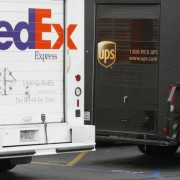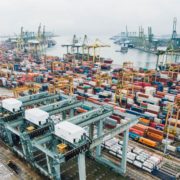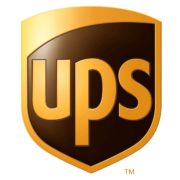They say, what goes up must come down and we believe that includes shipping costs!
Here is a Five Step Plan to rationalize your current transportation costs and use that data as a starting point to reduce those costs. We caution in advance however that this plan will require not just time on your part, but a commitment from the various key stakeholders within your organization. Ideally, this should include the most senior people in the organization. They need to understand the value of this mission and how it could positively impact the company’s bottom line. Follow these steps, commit to your savings goals, and you can do this.
Quantify Your Savings Goals:
Any cost reduction process must begin with goal setting. Ask yourself: How much do we WANT to save? How much do we NEED to save? Is there a delta between the two, and if so why? A sound knowledge of transportation cost structures is the key to successfully benchmarking costs and achieving savings. If your firm does not have the expertise to thoroughly understand the various cost structures, (including of course the assessment of accessorial fees and multiple surcharges), it may be time to outsource these services to a qualified Third Party. Remember in any negotiation, Knowledge is Power!
Identify Your Baseline:
What are your true transportation costs? Many costs may be hidden; perhaps your topline freight invoices don’t always reveal the whole story. For example, freight terms dictate how freight costs are captured, reported and expensed. In some cases firms purchase goods on a delivered basis. In many of these cases suppliers bury transportation costs in their product pricing, therefore masking the true cost of these shipments.
Transportation companies frequently overcharge shippers on invoices, and will make refunds ONLY when overcharges are detected and claims are filed for recoveries. Make sure your company has a comprehensive freight audit process in place to help find the money you never knew was missing!
Review and Update Your Supply Chain Strategy:
Supply chain economics change frequently; so should your supply chain activities. Many sourcing decisions that favored off-shore manufacturers for years are getting revised today. Similarly, consider consolidating fewer smaller deliveries into larger consolidated deliveries to reduce costs and improve efficiencies at the receiving dock. Remember there are hard savings in dollars, but equally important are the soft savings achieved as a result of process improvements. While we are on this topic, this is an area of savings that almost never gets the attention it should.
Develop and Track Key Performance Indicators, (KPI’s):
This is a mirror image of step #2, focusing on your internal processes. Here you’ll be measuring your basic transportation expenses across various platforms and materials: costs by product, by weight, by origin, destination, across various shipping modes, and so on. Settle on the number of KPI fields necessary to properly evaluate the success or failure of your initiatives. Do not overcomplicate the process by including metrics that have absolutely no value towards tracking and attaining the savings goals.
Initiate Your Cost Reduction Program:
You’re probably saying: sure, it’s that easy? Just like that! Well it can be just like that and here’s why: If you clearly establish your company’s current total cost of shipping, then you can clearly identify your cost reduction goals. Now you know exactly where you are and where you need to be to attain the realistic savings your company deserves.
A word of caution before getting started; you should never attempt to tackle this process alone if you are not absolutely sure of your starting point, (AKA current costs), and have clearly identified through a Comprehensive Benchmarking Process, where your company should be in terms of shipping expenses. Carriers will see right through your attempt to reduce costs without a clear and concise process and comprehensive documentation that proves beyond a doubt, that your company is entitled to the savings you are requesting.
Remember, there is help out there to make these negotiations simple, quick and more importantly, 100% successful, we are here to help.







